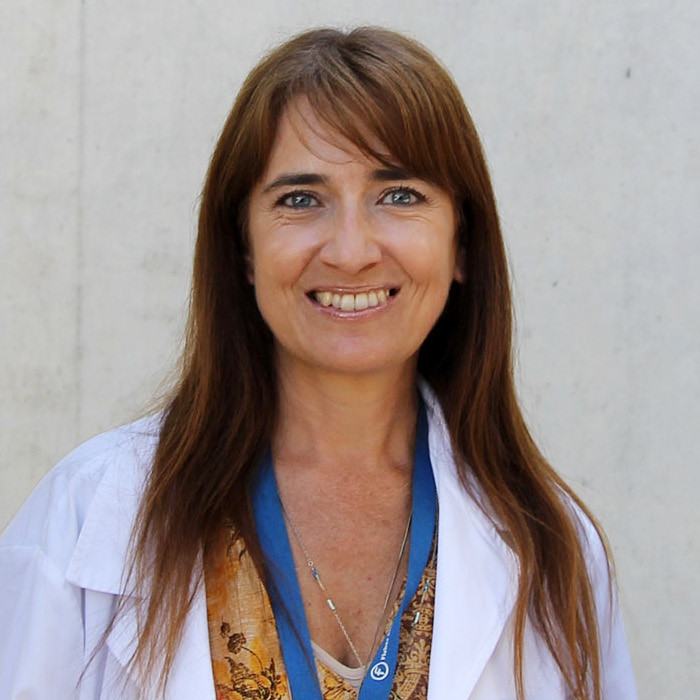Dr. Elsa Logarinho
Elsa Logarinho, Ph.D. is the Group Leader at Instituto de Biologia Molecular e Celular (IBMC). She has extensive experience in the Molecular and Cellular Biology of Mitosis. Her lab uses human primary fibroblasts and induced pluripotent stem cells to study cellular phenotypes associated with normative aging, premature aging diseases, and aneuploidy. Follow Elsa Logarinho’s Lab.
Watch Scientist Stories: Elsa Logarinho, Chromosomal Instability and Aging.
Since 2017, Elsa has been the Director of the Ageing and Aneuploidy group at i3S dedicated to high-profile research on the intricate link between aneuploidy and aging hallmarks. Using cellular and animal models of natural and accelerated aging, such as the Hutchinson-Gilford and Down syndromes, novel molecular targets whose modulation restores genome stability and delays senescence have been identified. She has published in Nature Communications, Embo Rep, Cell Death & Disease, and Nature Aging.
Elsa works on the Forkhead box M1 (FOXM1) transcription factor. It is known for its pleiotropic role in several biological processes, including cell proliferation, differentiation, and senescence. She demonstrated that induction of a FOXM1 transgene in animal models of Hutchison-Gilford progeria and natural aging is able to offset senescence-associated histopathology driven by age-dependent repression of endogenous FoxM1, significantly extending the healthspan.
Read FoxM1 repression during human aging leads to mitotic decline and aneuploidy-driven full senescence, Small-molecule inhibition of aging-associated chromosomal instability delays cellular senescence, FOXM1 repression increases mitotic death upon antimitotic chemotherapy through BMF upregulation, In vivo cyclic induction of the FOXM1 transcription factor delays natural and progeroid aging phenotypes and extends healthspan, and Age-associated clonal B cells drive B cell lymphoma in mice.
Elsa earned her Licentiate in Biochemistry in 1994 from the University of Porto at the Faculty of Sciences. In 2002, she earned her Ph.D. in Biomedical Sciences with specialization in Molecular Genetics of Mitosis from the University of Porto. During her Ph.D., Elsa developed advanced knowledge in cell division under the supervision of C.E. Sunkel, with a particular focus on two major mitotic kinases, Polo and BubR1, using Drosophila as a model system.
Two major publications from her Ph.D. have been highly cited, and her thesis “Regulation of cell cycle progression in Drosophila melanogaster” was honored with the Jacinto Magalhães Prize 2001. Read The Drosophila POLO kinase localises to multiple compartments of the mitotic apparatus and is required for the phosphorylation of MPM2 reactive epitopes and Mutations in the Essential Spindle Checkpoint Gene bub1 Cause Chromosome Missegregation and Fail to Block Apoptosis in Drosophila.
After her Ph.D., between 2002 and 2006, Elsa embraced a full-time academic career at the Health Sciences University, ISCS-N/CESPU, while maintaining her collaboration with Sunkel lab at IBMC. Read Different spindle checkpoint proteins monitor microtubule attachment and tension at kinetochores in Drosophila cells.
In 2007, she joined the Health Sciences School/ICVS Research Institute at Minho University as a full-time Assistant Professor and pursued her research in Mitosis. Read The Human Spindle Assembly Checkpoint Protein Bub3 is Required for the Establishment of Efficient Kinetochore-Microtubule Attachments and Kinetochore-microtubule interactions “in check” by Bub1, Bub3 and BubR1. Additionally, she collaborated on several research projects from different scientific areas, coauthoring 7 papers between 2007 and 2011.
In 2009, Elsa returned to full-time research activity, and joined the Chrom Instability and Dynamics lab headed by H. Maiato, with a Ciência 2008 position. Her work on mitotic spindle multipolarity was published in Nat Cell Biol in 2012 and recognized with the Pfizer Award for Basic Research 2011 and the SPGH 2013 Award for the best Portuguese work in Genetics 2012.
She was also awarded Best Poster Prize in Basic Research – 20th European Hair Research Society Meeting, United Kingdom, the Maximon Longevity Prize in 2022, the CESPU 2007 International Award for Scientific Research, and Mulheres na Ciência – 2ª edição 2019.
Elsa established novel independent research lines using human primary fibroblasts as a model system, which aim to address how aging and aneuploidy compromise mitotic fidelity. In July 2013, she started her research group at IBMC.
Read Tissue engineering strategies for human hair follicle regeneration: How far from a hairy goal?
Elsa published and coauthored a total of 43 publications and 20 papers as the main author in international peer-reviewed journals with an accumulated impact factor of 132.4 (average IF of 6.6), 2300 citations (average of 38.7), and an h-index of 25.
Watch her presentation at International Conference Healthy Masters.
Read The Emergent Power of Human Cellular vs Mouse Models in Translational Hair Research, Mitotic Dysfunction Associated with Aging Hallmarks, and Small‐molecule inhibition of aging‐associated chromosomal instability delays cellular senescence.
Visit her Work page, Academic page, LinkedIn profile, ORCiD page, Academia page, and ResearchGate page. Follow her on Facebook, Instagram, WhosAge, ScholarGPS, and X.
